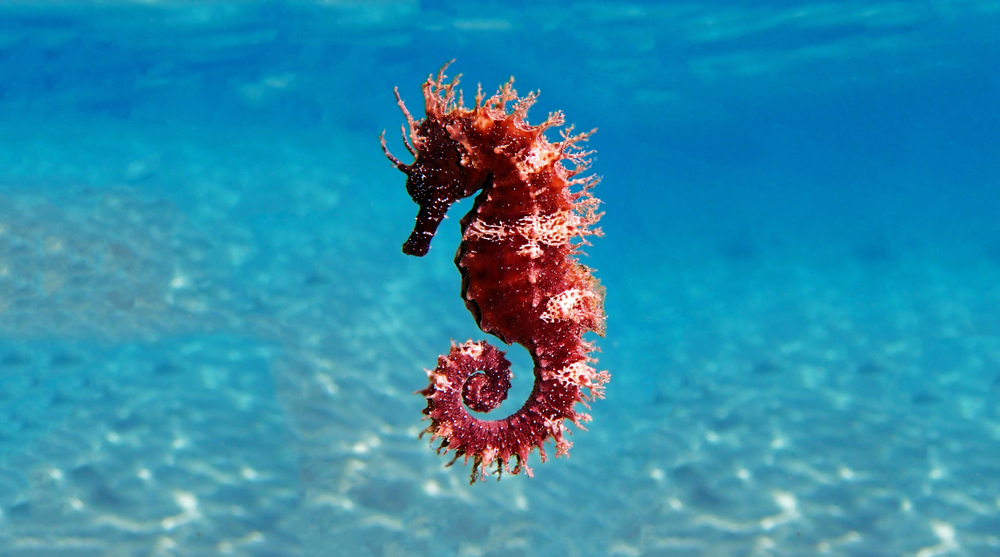Wildly Weird: The Strangest Facts About Animals

The animal kingdom is a never-ending source of wonder and intrigue. From the exotic depths of the oceans to the dense, uncharted rainforests, animals exhibit a wide array of behaviours, adaptations, and characteristics that can leave us both bewildered and enchanted.
This blog aims to delve into the most peculiar corners of zoology, uncovering some of the strangest facts about animals that you might have never imagined. Join us on a wild journey as we explore bizarre adaptations, peculiar behaviours, odd diets, unusual reproductive traits, and fun trivia that highlight just how astonishingly weird and wonderful the natural world can be.
Section 1: Bizarre Adaptations
One of the most extraordinary defence mechanisms in the animal kingdom is exhibited by the Hagfish. When threatened, this eel-like creature produces copious amounts of slime from its glands, effectively clogging the gills of potential predators and allowing it to escape.
Another fascinating creature is the Axolotl, sometimes referred to as the “Mexican walking fish.” Unlike other amphibians, Axolotls retain their larval features throughout their entire lives, a condition known as neoteny. This unique feature enables them to regenerate entire limbs, spinal cords, and even parts of their hearts and brains.
Lastly, deep in the ocean depths dwells the Barreleye fish, distinguished by its transparent head. This eerie adaptation allows the Barreleye to rotate its eyes within its head, granting it a wide field of vision to detect prey even in the pitch-black waters of its habitat. These bizarre adaptations highlight the incredible diversity of survival strategies employed by animals, each more fascinating than the last.
Section 2: Peculiar Behaviours
Among the most captivating behaviours in the animal kingdom is the intricate dance of the Lyrebird. Native to Australia, this avian marvel is renowned for its extraordinary ability to mimic natural and artificial sounds with astonishing accuracy. During mating season, the male Lyrebird performs complex vocalisations alongside an elaborate dance, spreading its stunningly ornate tail feathers to attract a mate.
Equally fascinating are Octopuses, which have been observed using tools—a remarkable trait previously thought to be exclusive to humans and some primates. These intelligent cephalopods may gather coconut shells and other objects to create shelters or defensive barriers, showcasing their resourcefulness. Equally impressive is the Arctic Tern, a bird known for its remarkable migratory pattern.
Each year, the Arctic Tern undertakes a grueling journey from its breeding grounds in the Arctic to the Antarctic and back, covering around 25,000 miles. This epic voyage is not only a testament to the bird’s incredible endurance but also highlights the lengths to which animals will go to survive and thrive in the wild.
Section 3: Odd Diets
When it comes to unusual dietary preferences, the animal kingdom truly does not disappoint. Take the Parrotfish, for instance, which displays one of the most peculiar eating habits by gnawing on rocks and coral. These vibrant reef dwellers have specialized teeth that allow them to scrape algae from hard surfaces, effectively grinding down the coral in the process.
Astonishingly, the ingested rock material is later excreted as fine sand, contributing significantly to the sandy beaches we enjoy. Equally bizarre are Vampire bats, which subsist on a diet exclusively composed of blood.
Found in Central and South America, these nocturnal mammals use their razor-sharp teeth to make an incision in their prey’s skin and then lap up the blood with their specialized tongues. While this might sound terrifying, their feeding process is surprisingly delicate, often going unnoticed by the host animal. Lastly, the Dung Beetle is another remarkable example of peculiar dietary habits.
These industrious insects feast on animal faeces, which they roll into balls and bury underground as a food source or a brood chamber for their larvae. This seemingly unsavoury diet not only provides essential nutrients but also plays a critical role in recycling nutrients back into the ecosystem, showcasing how even the strangest feeding behaviours can have significant ecological benefits.
Section 4: Unusual Reproductive Traits
The animal kingdom showcases a fascinating variety of reproductive strategies, some of which can seem downright bizarre. Take, for instance, the male pregnancy in Seahorses. In this remarkable species, it is the males who carry the eggs.
Female Seahorses deposit their eggs into a specialized brood pouch on the male’s abdomen, where he fertilizes them and carries them until they hatch. This role reversal ensures both parents are involved in nurturing the next generation.
Equally intriguing is the parasitic mating of the Anglerfish. In many deep-sea Anglerfish species, the much smaller male physically fuses with the female, essentially becoming a parasitic mate. His body merges with hers, providing sperm in a permanent symbiotic relationship, which ensures reproductive success in the sparsely populated deep sea. Lastly, there’s the extreme fertility of the Rabbit.
Known for their rapid reproduction, Rabbits can become pregnant almost immediately after giving birth. A single female Rabbit is capable of producing multiple litters each year, with each litter containing several kits, which enables them to quickly colonize habitats and expand their populations.
Section 5: Fun Facts and Trivia
Delving into the realm of fun facts and trivia unveils some of the most astonishing abilities found in nature. Among these marvels is the phenomenon of echolocation, a method used by animals such as bats and dolphins to “see” with sounds. By emitting high-frequency clicks and listening to the returning echoes, these creatures can navigate their environment and locate prey with remarkable precision, even in complete darkness or murky waters.
Another fascinating creature is the Turritopsis dohrnii, often referred to as the “immortal jellyfish.” This jellyfish possesses the extraordinary ability to revert to its juvenile form after reaching maturity, effectively bypassing death and starting its life cycle anew, making it theoretically capable of living indefinitely.
Equally impressive is the Mantis Shrimp, known for its incredibly powerful punch. This small marine crustacean can strike with the acceleration of a bullet, using specialised appendages called raptorial claws. The force of their punch is so potent that it can break glass aquariums and create cavitation bubbles that emit light and heat, demonstrating both the awe-inspiring power and complexity of the animal kingdom.
Conclusion
In exploring the wildly weird world of animals, we’ve uncovered an array of strange and captivating behaviours, diets, reproductive traits, and phenomenal abilities. From the complex dance and mimicry of the Lyrebird to the tool-using Octopus, the incredible migrations of the Arctic Tern, and the unique male pregnancy of Seahorses, the diversity of animal life continues to amaze.
We delved into odd diets, from Parrotfish grinding coral to Vampire bats’ delicate blood drinking and Dung Beetles recycling faeces. Moreover, we marvelled at the phenomena of echolocation used by bats and dolphins, the “immortal” lifecycle of the Turritopsis dohrnii, and the potent punch of the Mantis Shrimp.
Nature is teeming with peculiar wonders that not only add intrigue but also enrich our understanding of life on Earth. These oddities remind us that no matter how strange, each adaptation plays a crucial role in the survival and thriving of different species. As you venture into nature, take a moment to observe and appreciate these fascinating quirks, for they are a testament to life’s incredible diversity.
We invite you to share your own strange animal facts with us. What unusual animal behaviours, diets, or traits have you encountered? Join the conversation and celebrate the marvels of the animal kingdom together!




